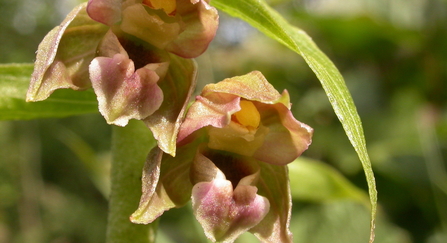As the summer heat reaches its climax, one of London’s wild orchids rises to the occasion.
Finding shelter within the cool tranquillity of the capital's wilder woodlands, the broad-leaved helleborine unfurls its long spindly flower spike through the dappled sunlight.
Up to 150 flowers hang forward, partially concealing their delicate colouring which range from deep crimson to bright lime green. All too often these colourful orchids are missed because their shy flowers face the floor, causing the whole plant to blend seamlessly into the bramble backdrop. But the structure of these little flowers is unusual.
Look closely and you'll see the lower part of the flower comprises of a small cup containing what, to all intents and purposes, looks like sticky jam. This jam-like substance is bait, but for who?
Anyone who has indulged in a late summer picnic will know that it isn’t long before a common wasp finds you. That’s exactly who the broad-leaved helleborine wants to attract. Common wasps reach high numbers as late summer draws in and the broad-leaved helleborine flowers are waiting for them. They take advantage of the wasp’s need for extra food which has dwindled in the nest with the transformation of the larvae into adults.
When feeding the larvae, the adults receive a sugary droplet which sustains them. Unfortunately for the wasps, the sweet liquid the broad-leaved helleborine produces has a somewhat unwanted effect. Laced within the gloopy reward is a cocktail of chemicals which have a similar effect on the wasps as alcohol does to us.
It's not uncommon to find wasted wasps flailing around hopelessly beneath the orchid. The reason the plant produces these chemicals is unclear but one theory suggests the mind-altering effects reduce the wasps' ability to remove the orchid’s pollen packets from their heads so maximising the pollination potential of the orchid.
The broad-leaved helleborine is found across London and especially in areas of old woodland but can turn up in new places such as the Natural History Museum’s wildlife garden – the closest site to central London. The broad-leaved helleborine has recently been discovered at our Sydenham Hill Wood, New Cross Gate Cutting and Denham Lock Wood nature reserves. Elsewhere, you can find good numbers at Chapel Bank in Croydon and the Hampstead Heath extension in Barnet.


